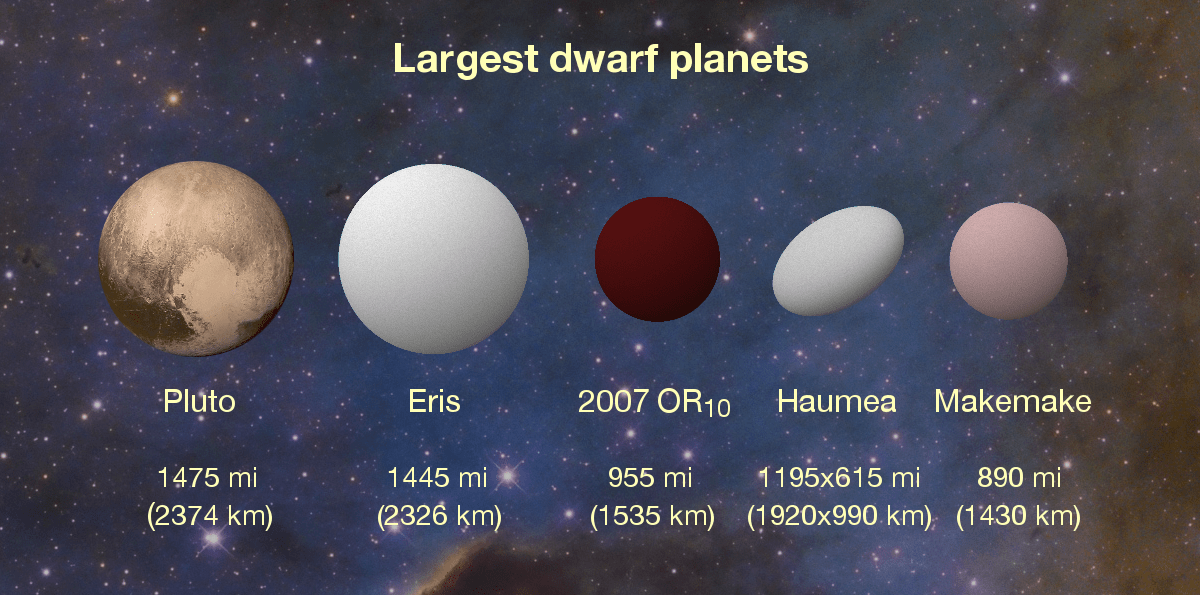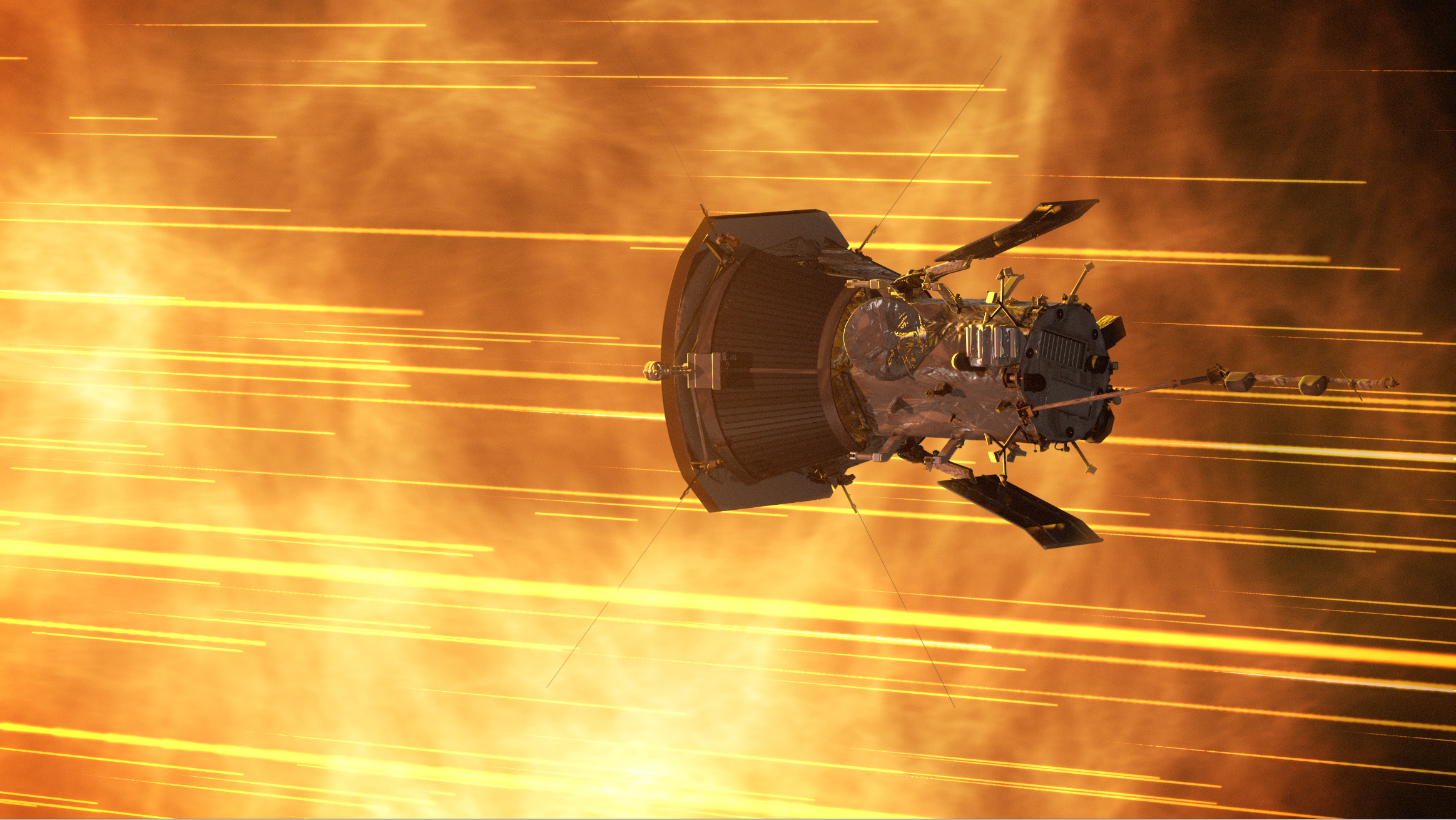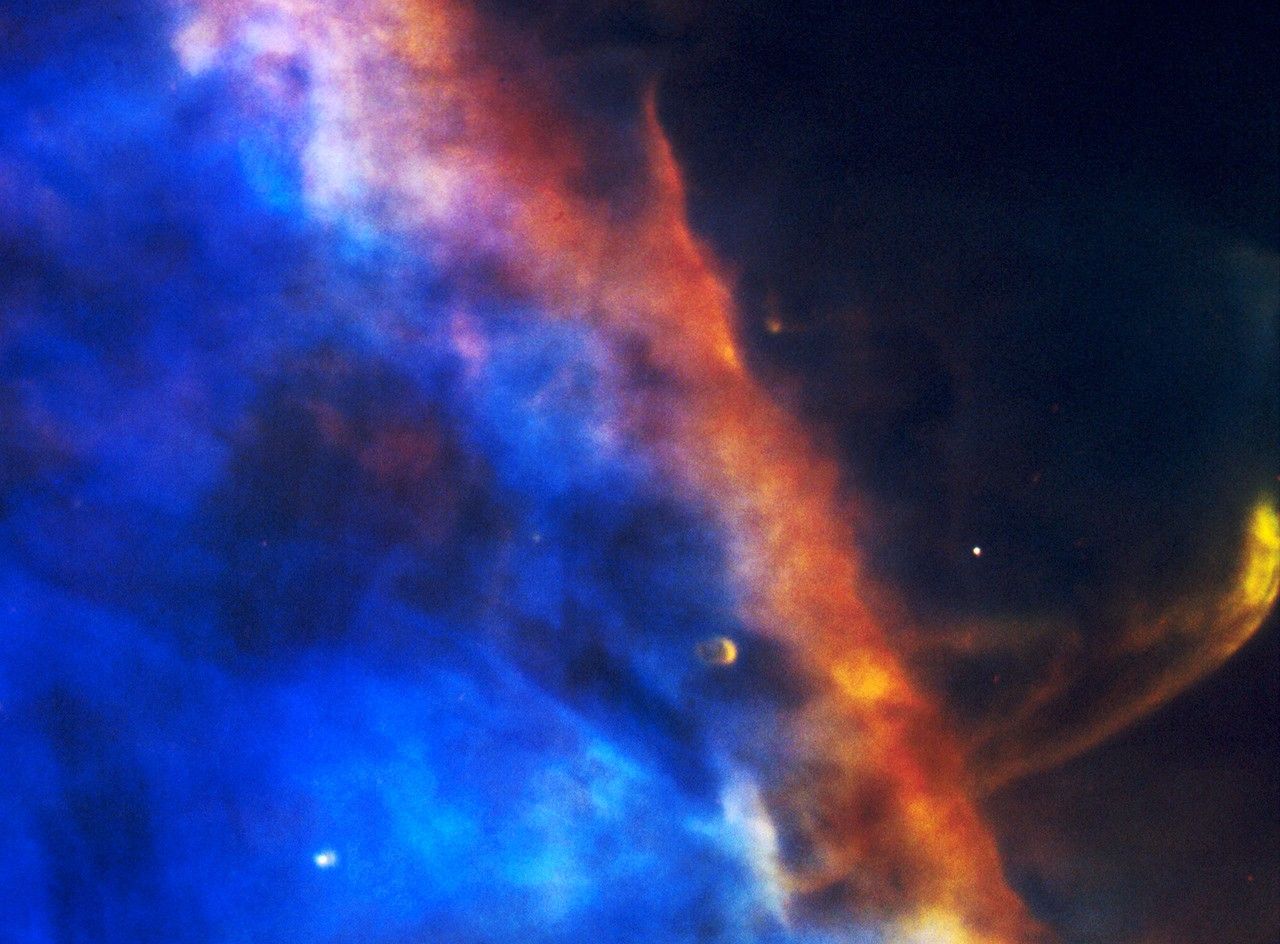Using computer simulations, scientists based at NASA have pieced together the story of how the dwarf planet Haumea, found in the Kuiper Belt of icy worlds beyond the orbit of outermost planet Neptune, became one of the most unusual objects in the solar system.
Nearly the size of Pluto, Haumea is strange in several ways. It spins faster, by far, than anything else of its size, whirling on its axis in only four hours. Because of its fast spin, Haumea is shaped like a deflated American football instead of a sphere. Its surface, made largely of water ice, is unlike almost any other surface in the Kuiper Belt, except those of a dozen “siblings” that have similar orbits as Haumea and appear to be related to it, making up the only known “family” of objects in the Kuiper Belt.
“How did something as weird as Haumea and its family come to be?” said Jessica Noviello, a scientist at NASA’s Goddard Space Flight Center in Greenbelt, Maryland.
This question inspired Noviello and her colleagues to turn to computer models that could, in theory, take Haumea apart and build it back up from scratch to understand the chemical and physical processes that shaped it.
“To explain what happened to Haumea forces us to put time limits on all these things that happened when the solar system was forming, so it starts to connect everything across the solar system,” said Steve Desch, professor of astrophysics at Arizona State University in Tempe, who worked with Noviello and other colleagues on the modeling experiment described in the Planetary Science Journal on Sept. 29.

View and download an interactive 3D model of Haumea.
Noviello met Desch when she was a research fellow in his lab from 2019 to 2020. Desch had been working with his students for several years to try to piece together disparate clues into a clear story about the evolution of Haumea.
“There are a lot of odd, ‘gee whiz’ parts to Haumea,” Desch said, “and trying to explain them all at once has been a challenge.”
Haumea is too far away to measure precisely through an Earth-based telescope, and no space mission has yet visited it, so data is scant. Thus, to study Haumea (and other little-known worlds), scientists use computer models to make predictions that fill in the gaps.
The researchers began by feeding only three pieces of information into their models: Haumea’s estimated size and mass, and its rapid four-hour “day.”
The models spit out a refined prediction of Haumea’s size, its overall density, and the density and size of its core, among other features. Noviello then fed this information into mathematical equations that helped her calculate the amount of ice on Haumea and the dwarf planet’s volume. Additionally, she calculated how Haumea’s mass is distributed and how that affects its spin. With this information in hand, she sought to simulate billions of years of evolution to see which combination of features of a baby Haumea would evolve into the mature dwarf planet it is today.
“We wanted to understand Haumea fundamentally before poking back in time,” Noviello said.
The scientists assumed that baby Haumea was 3% more massive to account for the family members that once were part of it. They also assumed Haumea likely had a different spin rate and was bigger in volume. Then they slightly changed one of these features at a time in their models – such as tweaking Haumea’s size up or down – and ran dozens of simulations to see how small changes in its early years would influence Haumea’s evolution. When the simulations spit out results that resembled today’s Haumea, scientists knew they had landed on a story that matched reality.
Based on their modeling, Noviello and her colleagues hypothesize that when the planets were first forming and everything was zipping around the solar system, Haumea collided with another object. Though this impact would have knocked off pieces, Noviello and her colleagues suggest that those pieces are not the Haumean family we see today, as other scientists have proposed. Such a powerful impact, they say, would have knocked off bits of Haumea into much more scattered orbits than the family members have.
The Haumean family we see today instead came later, as the dwarf planet’s structure was taking shape: dense, rocky material was settling to the center while lighter density ice was rising to the surface, said Desch, “and when you concentrate all the mass towards the axis, it decreases the moment of inertia, so Haumea ended up spinning even faster than it does today.” Fast enough, scientists calculated, that ice flung off the surface forming the Haumean family.
Meanwhile, Haumea’s rocks, which, like all rocks, are slightly radioactive, generated heat that melted some ice, creating an ocean below the surface (no longer there), found paper co-author Marc Neveu, a NASA Goddard researcher. Water soaked into the rocky material at the center of Haumea and made it swell into a large core made of clay, which is less dense than rock. The larger core increased the moment of inertia and thus slowed Haumea’s spin to its current rate.
By Lonnie Shekhtman
NASA’s Goddard Space Flight Center, Greenbelt, Md.





























